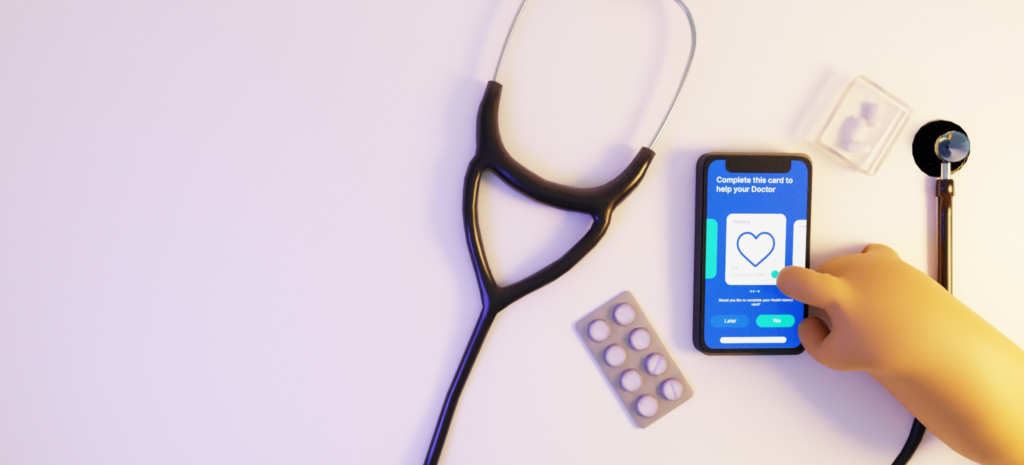Let’s start with the most obvious question – What is PropTech? The name PropTech is an amalgamation of the words “property” and “technology”, and is also commonly referred to […]
Technology has found a way to seep into every corner of our lives, including how we manage our health. Medical technology (MedTech) apps have shown to have a positive impact on patient outcomes, and consequently on the overall cost of care. This has huge implications for the individual’s health, as well as the healthcare sector in general. Today, you have access to hundreds of thousands of healthcare apps, which fall in a variety of different categories, some of which are:
Healthcare apps are empowering people to take their health into their own hands and provide real value to their lives. They are also helping doctors support their patients more effectively, as medical apps can provide real-time and relevant information about the physiological and psychological condition of the patient over a period of time. These benefits are why the MedTech industry is booming, and the competition is fierce. Hence, healthcare app design is extremely important, both in the sense of customer satisfaction as well as profitability.


Healthcare app development can be very complex, and there are many challenges that come with it. Given that it’s a matter of people’s health and therefore lives, developers have big responsibilities when creating a suitable and accessible medical app. Some of the biggest challenges for healthcare mobile app design include:
Your first and biggest responsibility is making sure the app is not endangering anyone’s life with its functionality. Healthcare apps that don’t function as required, can have real consequences on a person’s health.
The first reason why many people might avoid using a certain type of medical app is that they don’t trust it. Think of the authority and credibility a doctor commands. Your app should have such credible resources when providing information and recommendations to users.
Health-related information is highly confidential, and understandably, users need to know their personal information is safe and secure. Your app needs to follow all GDPR and data encryption regulations to prevent data misuse.
Many apps today sync information gathered from one or multiple devices (fitness watches, medical devices, etc.). Integration of all these devices requires the use of APIs (application programming interfaces), which is not an easy task.
The cost of developing a healthcare app can be anywhere from 5.000 to 500.000 euros. The amount depends on many things, namely:
Now we come to the most important question – How to design a healthcare app? Let’s divide it into 3 main steps, all equally important. You may even need to do a few iterations through them!
This is always the first step when developing any sort of application. You need to get to know your competition and analyze the functionalities of apps similar to your idea. By checking user reviews, you can get an idea of “dos” and “don’ts” for your own design. You also need to define who your end-user will be: patients, doctors, or both? Some of the key functionalities of healthcare apps in the market today include:
Depending on the type of healthcare app, the UI and overall look of the app can take a backseat compared to its functionality and usability – which are the two most important aspects. The app’s functionality will ultimately decide the direction of User Interface (UI) development, not the other way around. What are some general aspects of UI design that you should keep in mind?
With MedTech apps especially, it is important they have an intuitive, logical interface, unburdened by unnecessary details which can deter both doctors and patients from using the app. Gradually introduce new information and features when starting to use the app, and assist users with helpful tips along the way.
Many people utilizing medical apps have chronic illnesses and disabilities which may or may not cause difficulties navigating and using the app. Even when developing the app for a specific disease or condition, you need to keep in mind that the users can have multiple aspects of their health affect their use of the app.
Besides conveying your brand image, color choice is extremely important when designing your medical app UI. For one, different colors should be utilized in the notification design to indicate their urgency and seriousness. Different notification types should have different colors and designs to be easily differentiated. Another thing is keeping in mind how colors and animations can affect people with conditions like anxiety, nausea, epilepsy, color blindness, etc., and giving options for adjusting accordingly.
Testing is particularly important in healthcare app development, for obvious reasons. You should arrange for extensive testing for bugs and malfunctions which can actively harm users if not addressed. Furthermore, use beta users – both patients and healthcare professionals – to test for usability, functionality, and security. Observing users can also reveal other previously overlooked issues and help determine what revisions should be made.
MedTech apps will continue to evolve and their use will expand dramatically. Perhaps your business can utilize one of the thousands of already existing healthcare apps. However, if you need a customized solution tailored specifically to your wants and needs, contact us here at Redvike. We can offer a professional development team to develop a cost-effective product that will align with your idea, complemented with our experience.